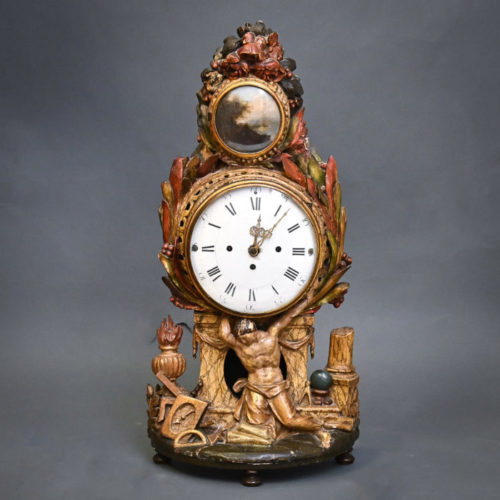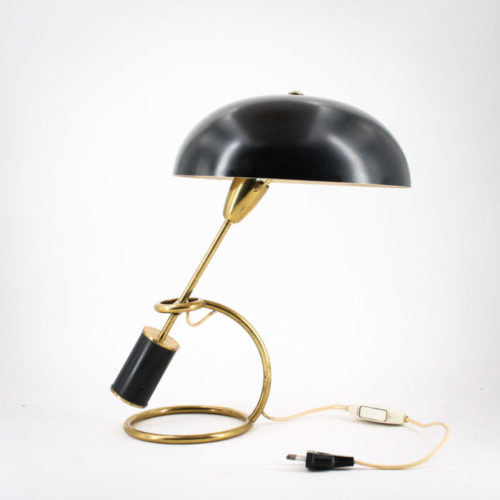-
Out of stock
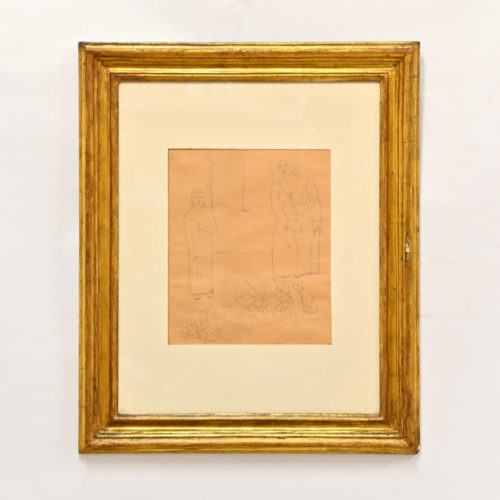 "Women on the Carpet", original pencil drawing by Carlo Carrà, 1920, in a beautiful eighteenth-century frame. The drawing was published in the catalogue of Carrà's drawings, edited by Franco Russoli and Massimo Carrà, 1977. Period: 1920 Measurements: Framed H 73 x W 60 x D 4 / Drawing H 36 x W 29,5 cm
"Women on the Carpet", original pencil drawing by Carlo Carrà, 1920, in a beautiful eighteenth-century frame. The drawing was published in the catalogue of Carrà's drawings, edited by Franco Russoli and Massimo Carrà, 1977. Period: 1920 Measurements: Framed H 73 x W 60 x D 4 / Drawing H 36 x W 29,5 cm -
Out of stock
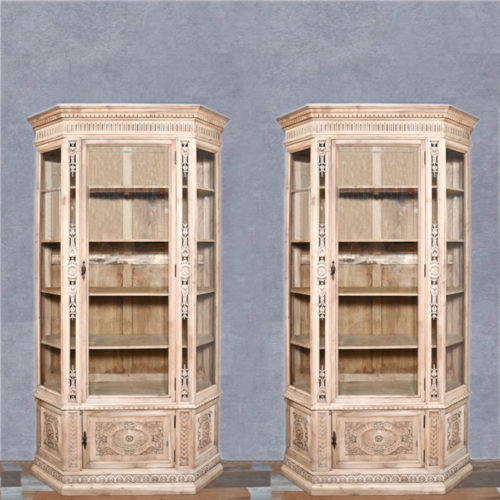 Pair of walnut bookcases, sandblasted in neo-Renaissance style. The bookcases date from the end of the 19th century. Period: late 19th century Measurements: H 241,5 x W 130 x D 40 cm
Pair of walnut bookcases, sandblasted in neo-Renaissance style. The bookcases date from the end of the 19th century. Period: late 19th century Measurements: H 241,5 x W 130 x D 40 cm -
Out of stock
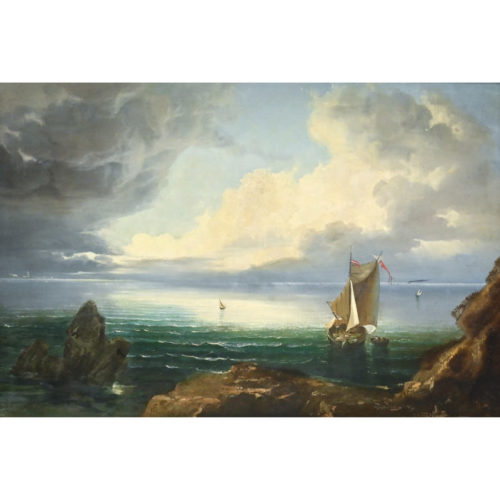 "Marina' oil on canvas by Giuseppe Camino. The painting is listed in the Angelo Mistrangelo catalogue (No. 112) Period: 1889 ca. Measurements: Framed H 118.5 x W 158.5 x D 5 cm / Canvas H 102 x W 142 cm
"Marina' oil on canvas by Giuseppe Camino. The painting is listed in the Angelo Mistrangelo catalogue (No. 112) Period: 1889 ca. Measurements: Framed H 118.5 x W 158.5 x D 5 cm / Canvas H 102 x W 142 cm -
Out of stock
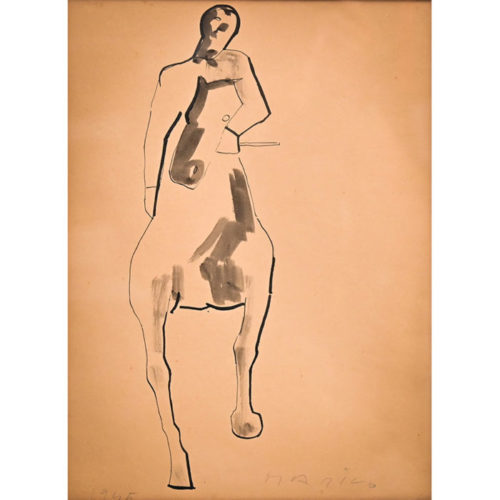 "Cavallo e cavaliere" by Marino Marini, pen and brushstroke ink on paper, 1945. Signature at lower right. The drawing was included in the archive of the artist's autograph works in May '94. Period: 1945 Measurements: Framed H 63 x W 53.5 x D 5.5 / Paper H 35 x W 26 cm
"Cavallo e cavaliere" by Marino Marini, pen and brushstroke ink on paper, 1945. Signature at lower right. The drawing was included in the archive of the artist's autograph works in May '94. Period: 1945 Measurements: Framed H 63 x W 53.5 x D 5.5 / Paper H 35 x W 26 cm -
Out of stock
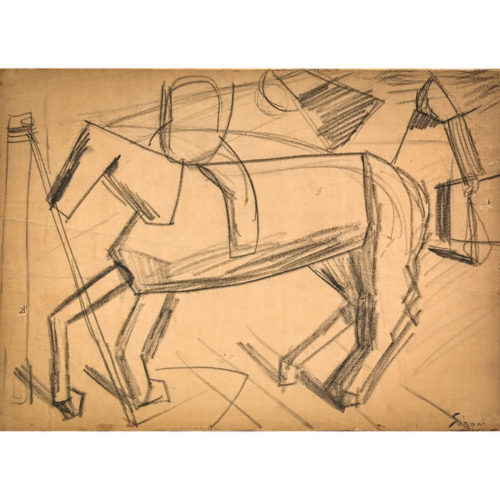 Mario Sironi - Jockey on Horseback - Futurist work from 1914, pencil on canvas paper, signed lower right. On the back, date, title and signature by Willi Macchiati. Period: 1914 Measurements: Framed H 57.5 x W 73 x D 4.5 cm / Paper H 23 x W 32 cm
Mario Sironi - Jockey on Horseback - Futurist work from 1914, pencil on canvas paper, signed lower right. On the back, date, title and signature by Willi Macchiati. Period: 1914 Measurements: Framed H 57.5 x W 73 x D 4.5 cm / Paper H 23 x W 32 cm -
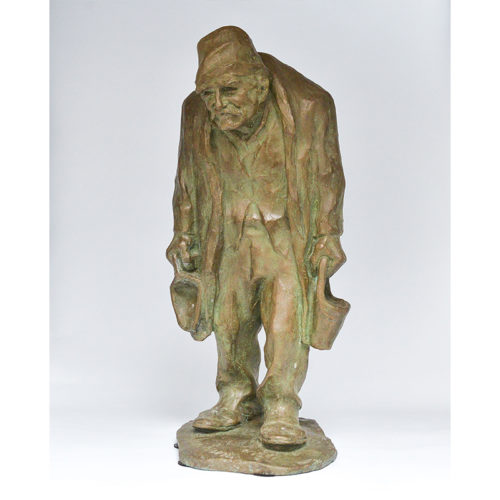 Bronze sculpture by Sandrun entitled "My teacher Tòni dël Fatin". Perfect in patina, excellent condition This work is present in Sandrun's monograph and contains the following description: "His master? Of course" Tòni dël Fatin ", friend of the artist, who died hit by a car right in front of the church of Cossila San Grato, was his teacher. And it was just as the student modeled it in clay and then cast in bronze. An angular, wise, ironic little man, humbled by the weight of years and misery. He had a lot of influence on our Franceschino, especially on the way we relate to the real world, to nature, to men. Like the Greeks , Sandrun also tried to bring out their personality from these figures, not only by working on the face, but also on the body and on the attitudes that life forces us to assume "Period: 1965 Measurements: H 60 x W 35 x D 29 cm
Bronze sculpture by Sandrun entitled "My teacher Tòni dël Fatin". Perfect in patina, excellent condition This work is present in Sandrun's monograph and contains the following description: "His master? Of course" Tòni dël Fatin ", friend of the artist, who died hit by a car right in front of the church of Cossila San Grato, was his teacher. And it was just as the student modeled it in clay and then cast in bronze. An angular, wise, ironic little man, humbled by the weight of years and misery. He had a lot of influence on our Franceschino, especially on the way we relate to the real world, to nature, to men. Like the Greeks , Sandrun also tried to bring out their personality from these figures, not only by working on the face, but also on the body and on the attitudes that life forces us to assume "Period: 1965 Measurements: H 60 x W 35 x D 29 cm -
Out of stock
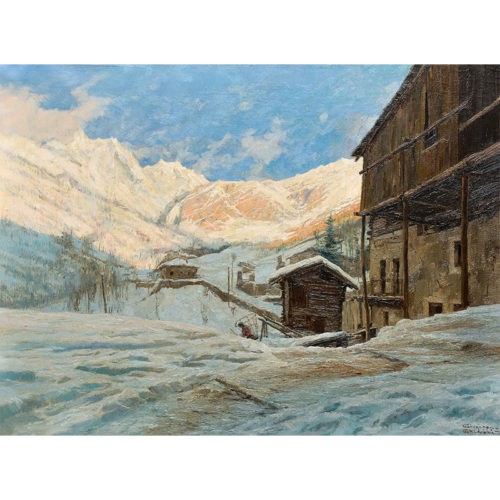 Period: about 1920 Measurements: In frame H 83 x L 102 x P 7 / Table H 61 x L 80.5 cm"Valle d'Aosta landscape with huts" - Oil on panel by Giuseppe Gheduzzi (1889-1957). Born in Crespellano (Bologna) on May 12, 1889, he lived in Turin where he died on May 21, 1957. He learned the basics of art from his father Ugo, then attended the Accademia Albertina, a pupil of Andrea Marchisio and Paolo Gaidano, for only three years, because he was forced to help his father in the scenography works. He was a skilled landscape painter. It began in Vignola in 1907 with an alpine landscape. He held several solo exhibitions and took part in many exhibitions. He participated in the events of the Promotrice alle Belle Arti in Turin for twenty consecutive years (awarded with a gold medal) and in the circle of artists in Turin. Solo exhibitions were held at the Bolzani Gallery in Milan; at the Galleria A. Garabello in Biella; at Galleri Fogliato and Lombardi Gallery in Turin.
Period: about 1920 Measurements: In frame H 83 x L 102 x P 7 / Table H 61 x L 80.5 cm"Valle d'Aosta landscape with huts" - Oil on panel by Giuseppe Gheduzzi (1889-1957). Born in Crespellano (Bologna) on May 12, 1889, he lived in Turin where he died on May 21, 1957. He learned the basics of art from his father Ugo, then attended the Accademia Albertina, a pupil of Andrea Marchisio and Paolo Gaidano, for only three years, because he was forced to help his father in the scenography works. He was a skilled landscape painter. It began in Vignola in 1907 with an alpine landscape. He held several solo exhibitions and took part in many exhibitions. He participated in the events of the Promotrice alle Belle Arti in Turin for twenty consecutive years (awarded with a gold medal) and in the circle of artists in Turin. Solo exhibitions were held at the Bolzani Gallery in Milan; at the Galleria A. Garabello in Biella; at Galleri Fogliato and Lombardi Gallery in Turin.
